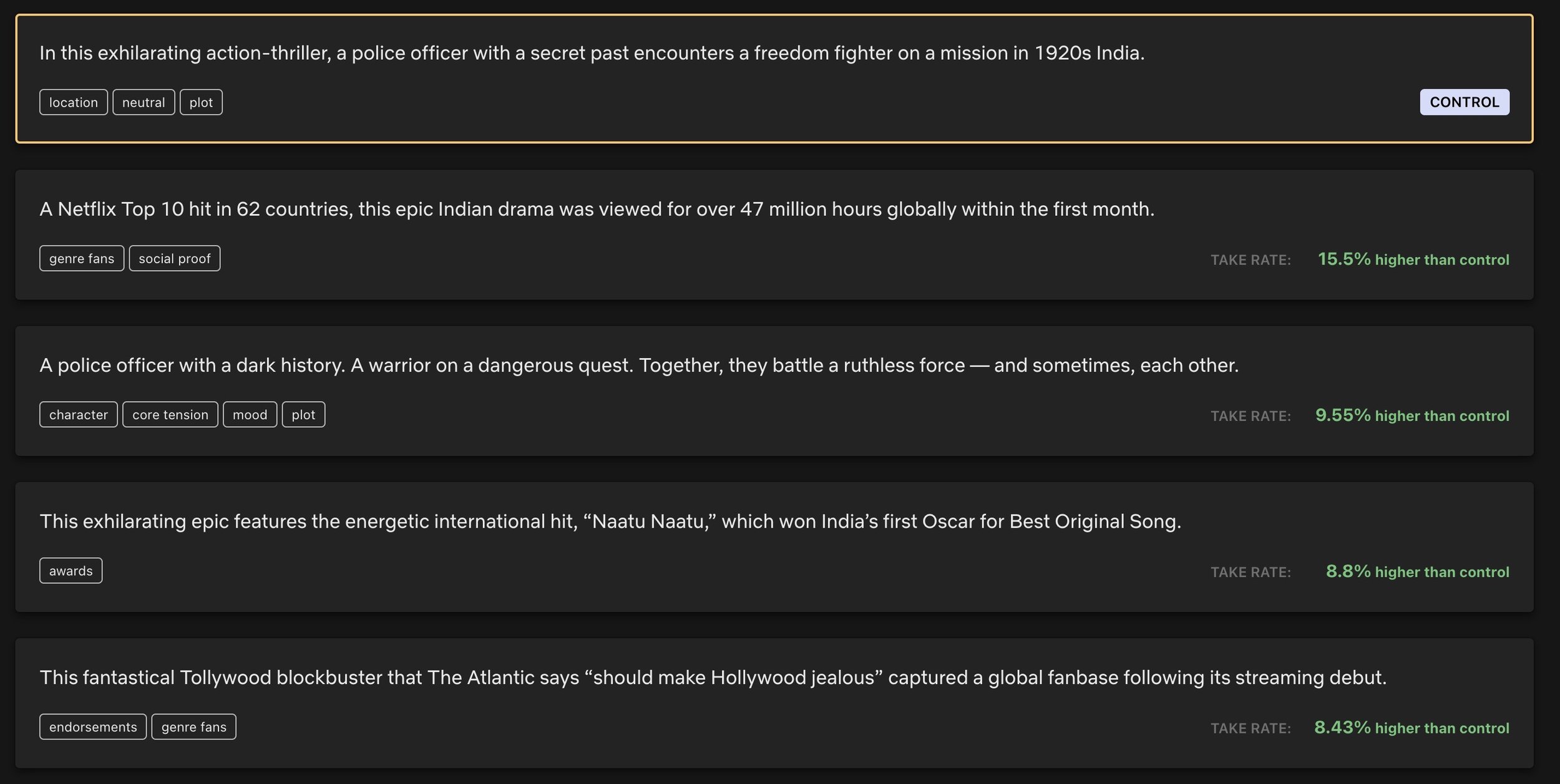UX Writing Case Study: Synopsis Innovation & Optimization
Overview
As part of a personalization system for synopses called “Continuous Explore-Exploit,” I developed a range of synopsis types (four to 10 variants) for every film and series under my purview. The central goal of this initiative was to match more members with synopses — and content — that spoke to them in order to improve the user experience and increase title viewing/overall streaming.
The Problem & The Users
While artwork and video asset optimization was already in full swing and had seen success, text evidence optimization was yet to be explored.
CI research showed that members value different kinds of information when deciding what to watch. Some want to connect with characters and storylines in a title, while others want to know who the actors are, or whether the title is popular or critically acclaimed. Serving only one plot-focused synopsis per title did not account for a spectrum of member interests, and limited the title’s potential to reach its full audience.
Prior to beginning the writing process, I verified the title’s assigned tier in our internal system. The tier was based the title’s projected global viewing rate, which would determine the minimum number of synopsis variants needed (anywhere between four to 10).
The Process
User Research:
I watched the title in full, then gathered supplemental context materials from stakeholders, including a detailed analysis from a metadata specialist and a memo from content partners noting why the title was greenlit (popularity of the genre, fostering talent relationships, experimentation, etc). The aim was to put the member experience at the forefront and avoid spoilers or trustbusters in the copy, while keeping in mind principles and guardrails such as legal constraints, content/regional sensitivities, and talent controversies.
Writing:
I crafted variants which could lean into any combination of the following tags: plot, character, mood, social proof, location, core tension, regional variants, endorsements, neutral, 250 characters, on-screen talent, off-screen talent. Thought starters included:
How would I describe this title to three very different people
Are there various plot points, characters, or themes that I could foreground for members?
Is there an angle that might already appeal to members familiar with the title or its IP, including prospective re-watchers?
Is there a specific angle that could apply to a regional audience?
In order to better measure the value of synopsis CEE, a "neutral" synopsis variant was created for each title. Also known as the “control,” this allowed us to compare CEE performance within a title, across titles and over time. The neutral variant used only factual details about the title and followed a consistent, formulaic syntax. (Example: “This sci-fi action series featuring Elliot Page is based on the comics by Gerard Way.”)
I shared the full synopsis suite with stakeholders in content, PR, marketing, and legal to gather feedback on factual and tonal accuracy of the copy, and clear any talent or sensitivity concerns if necessary.
Productization
The first 24 hours of the title’s launch operated as the “explore” phase of CEE, in which the synopsis variants were served to members with equal distribution. The data gathered during this phase helped match the right synopsis with the right member during the “exploit” phase of CEE.
Results & Learnings
Using Lex, an in-house data tool that reflected how synopsis variants for titles were received, we observed variants that performed significantly higher or lower than the control.
In-house data observed a clear overall lift in streaming across countries, languages, and even UIs after synopsis CEE began.
These small but significant results signaled an opportunity to continue to innovate in this area, but also made us rethink our strategy to be more purposeful in the intent of different types of copy types, and better control for changes introduced in the experience.
These results also led to the decision to expand the synopsis CEE initiative beyond only high-tier branded titles to lower-tier and non-branded titles as well.



